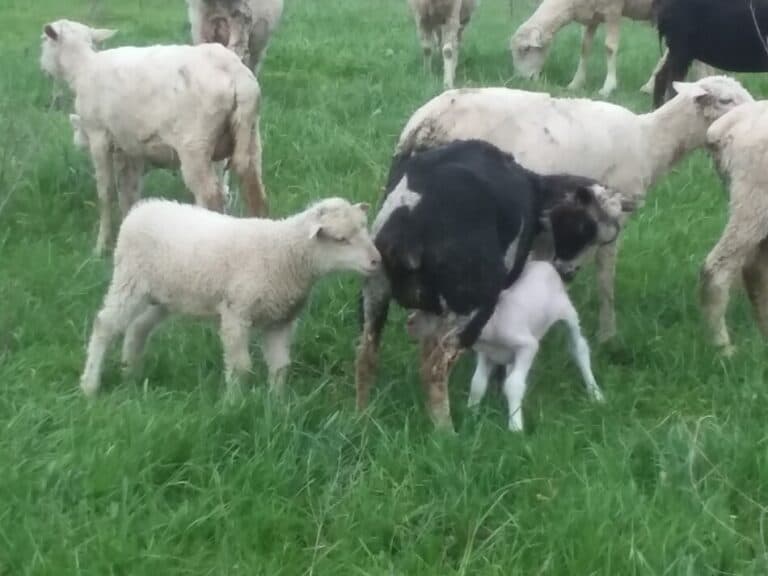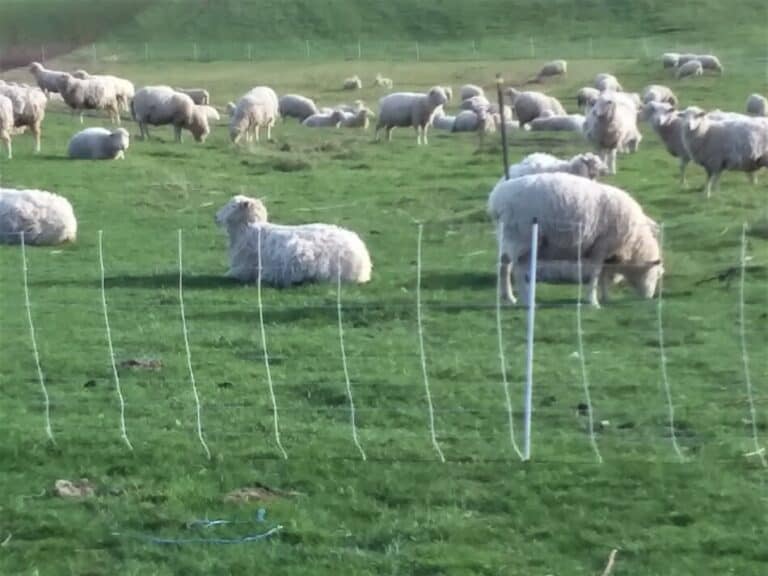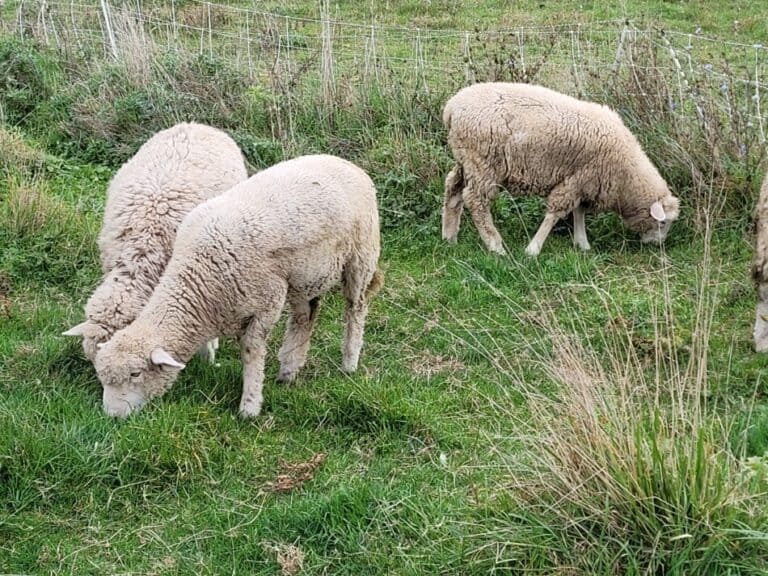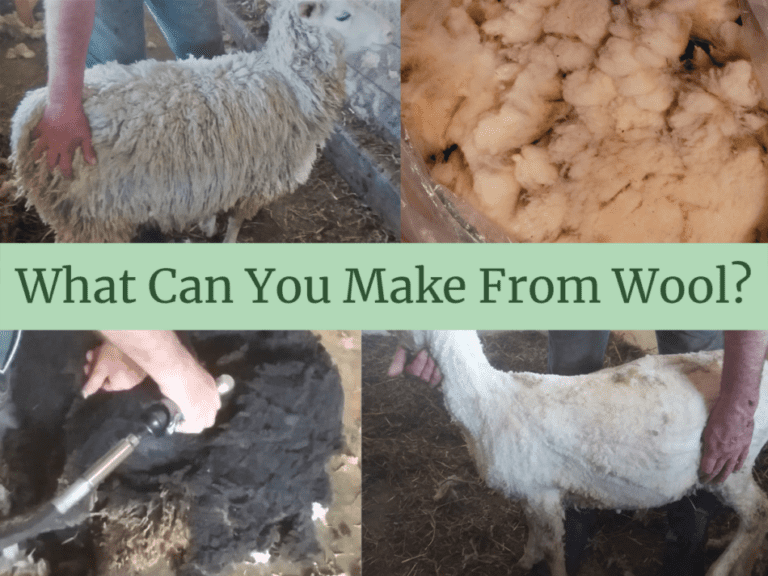Why Do You Cull Sheep? (& how to tell when you need to)
When you are new to raising sheep, you are happy to have as many sheep as you can and certainly wouldn’t dream of selling any of them.
Then you get a few years down the road you realize that maybe a few of the flock members need to be sold or replaced. How do you figure out which sheep to cull?
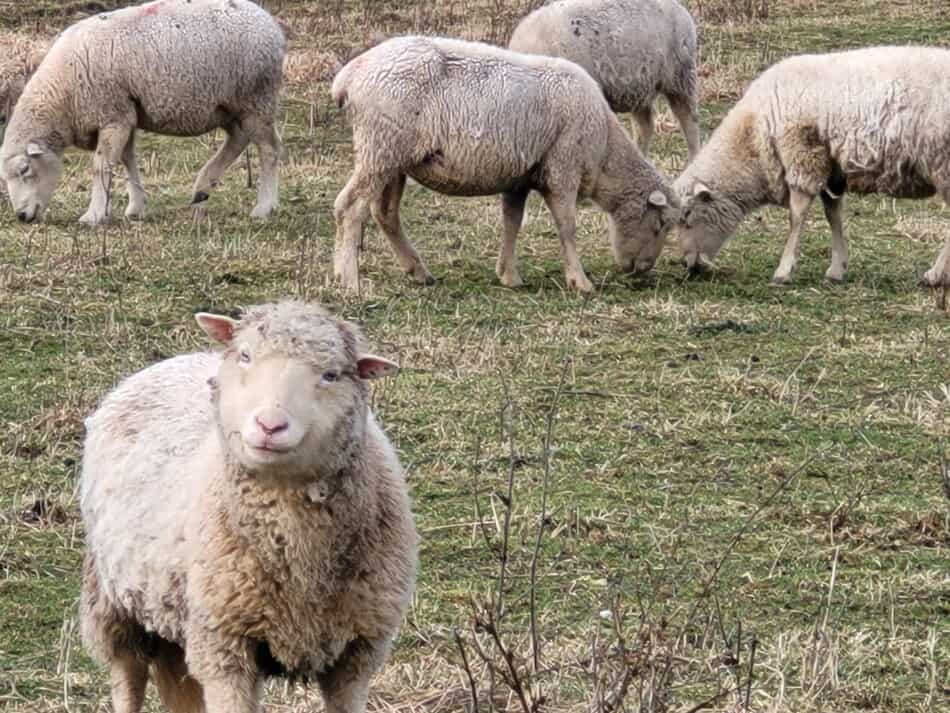
Cull sheep to remove non productive flock members
Culling means to permanently remove a sheep from the flock. Culling is a tool that sheep farmers have to take out any lower value or non productive sheep in the flock.
The average culling rate in the U.S. is 14% which would have you replacing all of your flock about every 7 years. If you bump your cull rate to 20%, that has you replacing the flock every 5 years.
Since the average productive life of sheep tends to be 6 years or so, most flocks would cull between 14-20% just to keep up with the ageing of their stock. Culling 16% would give you an average age of 6.25.
Raising Sheep For Profit is my article that shows you some of the things to keep in mind when raising sheep for a small farm business.
Cull sheep to increase results for farm
When you cull out the low or non producers from the flock, the sheep farmer automatically makes more money for his or her time and the rest of the flock is better off.
Culling to increase flock results is a benefit in multiple ways:
- farmer gets back more money in profit
- removes individuals that are no longer suited to the flock
- sheep that stay have more feed or grass available
- increases overall health of flock
Your flock will continue to need management and direction throughout the year, every year.
Sheep that were all stars for you last year, may not be this year or some sheep that you picked out at the breeder’s may not work for you at all. This is normal.
Part of your job as the owner is to cull out the non performers so that you can spend your resources, including your time, with the sheep that have the ability to do what you need them to do.
Cull a sheep when it falls behind or takes more work
You should consider culling a sheep when she falls behind the group.
As an example, if 90% of the flock is doing fine on hay in the winter, but the other 10% just don’t keep on weight like the rest, consider culling that 10%.
You could separate out and supplement the 10%, feed the entire flock more or just cull the ones that are not fitting into your system and spend your time with the ones that are.
Some ewes are non cooperators, consider culling these, as well.
For example, let’s say you have 2 ewes that insist on being out of the fence no matter what the rest of the flock has to eat. The rest of the flock seems happy, it’s just those 2 escapees.
Those 2 ewes are not hungry, they are non cooperators. Cull them and make your life easier. You’ll be surprised how much more time you have and how much less you worry about the flock getting out.
We just put a ewe in the front field (next to the barn) with a big orange mark on her back because she and her lambs are clear up here while the rest of the flock is at the back of the farm.
She is a beautiful ewe but a fence popping machine. She burrows under the bottom strand of the netting but is not opposed to jumping either! That gal will be sold as soon as she weans the lambs.
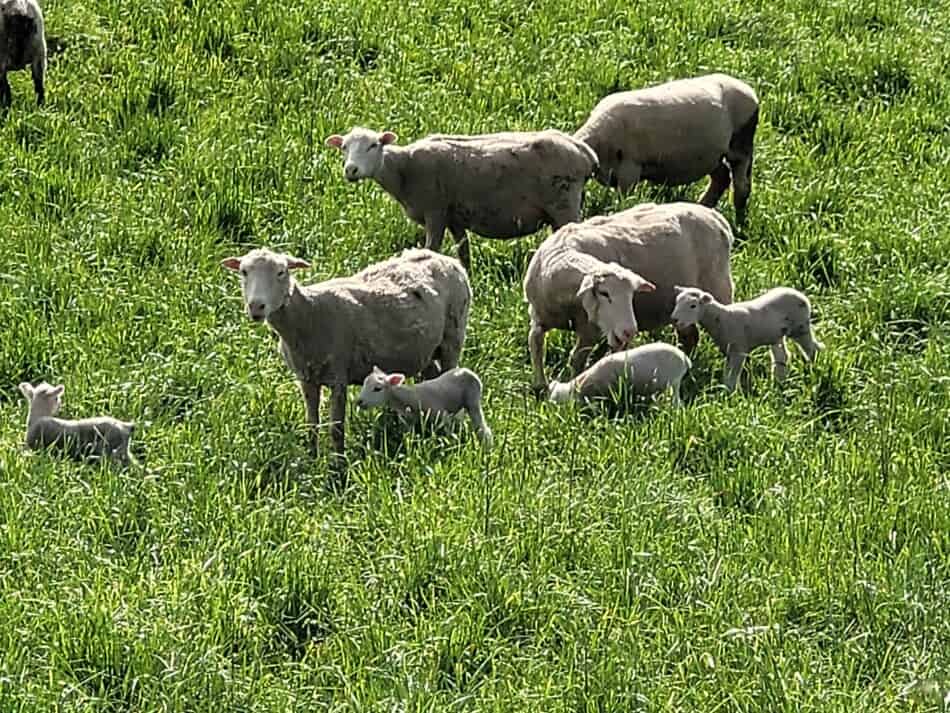
Culling ewes non productive ewes
Culling ewes means to pull a ewe or a group of ewes out of the flock to sell due to lack of production ability.
The reason for culling could be an age related problem, poor performance at lambing, bad attitude, or any number of other things that make this sheep one you would rather sell than keep.
How Much Does A Ewe Cost? is my article that will help you find the cost to replace ewes in your area.
Two culling strategies
Where you specifically draw the line on keeping ewes is your choice.
You can decide to keep them for up to 6 years of age then automatically sell all ewes of that age or you can make your choices based on individual performance.
There is good and bad to both.
Culling based on age
If you choose an automatic culling age, you should not end up dealing with as many special needs sheep and should have a younger flock as you replace your older ewes with ewe lambs.
The not so great part of this is that you’ll have to come up with about 20% of your flock every year as replacements, depending upon age of ewe at first lambing.
This 20% of the flock replacement group would be a good amount of cash or a fairly large group of ewe lambs that were not sold, meaning they did not make you any money this year.
The down side of an automatic culling age is that you are missing out on great years of some of your ewes in order to cull out the few that will not be able to continue to perform.
Increase Lamb Crop by Culling Ewes by Susan Schoenian lists the reasons for culling ewes by percent with 55.6% of culling due to age, which is by far the most common reason to cull.
For example, let’s say you choose 6 as your automatic culling age, so the ewes will lamb as 6 year olds, raise and wean lambs, then all be sold regardless of individual performance.
This mass sell off will have you selling off some nice, older ewes that still have some productive years left, but it should keep you from ending up with a bunch of older ewes that are no longer productive.
If you have the replacements to add to the flock, keeping a younger flock is something to consider. If you do not have plentiful replacements coming up, why not keep the older ewes that are performing well?

Culling based on individuals
The other plan of culling is culling based on individual performance of the ewes, meaning you keep her as part of the flock until you can see that she is not keeping up with her peers then she is culled.
This is how we cull ewes, mainly because there are younger ewes that will flame out with a variety of problems, so age is not the only reason for under performance of ewes.
Since we want to keep a certain flock size, we can either keep some of the older ewes that are doing well, or buy replacements. We prefer to keep the older ewes that pass the pre breeding season look over.
What should you be looking for? Well, there are some basics that all ewes need to be productive, like good teeth, udder, feet and keeping on weight, but there may also be some flock specific things for you.
Are you trying to go with a specific shape of ewe?
Do you find that certain traits in the ewe seem to make a more valuable market lamb? For instance, do lambs with tighter wool sell better in your area? If so, choose ewes with a more tidy wool cover.
Reasons to cull rams
So far, we have gone over the reasons you may want to cull some ewes, which is where most of your culling is going to happen simply because there more ewes than rams, but rams still need culled.
Some of the reasons to cull rams are pretty much the same as reasons to cull ewes, things like bad feet, or teeth and inability to keep on weight. Other reasons to cull rams are more about age or performance.
Age related reasons to cull rams are:
- he’s not keeping up with younger rams
- he is related to some ewe lambs you want to keep as replacements
There is no specific age when you need to get rid of a ram. As long as you like the lambs being produced, it looks like he is doing a good job of getting all of the ewes bred and you like him, he’s probably fine.
What is more likely to happen is that you will still like to use him but he will start having age related problems and he will need to be culled.
Production related reasons to cull rams are:
- you want to switch the type of lambs you are selling
- fertility problems
- he is showing poor behavior towards people
Production related reasons to cull rams are a bit different, these need fixed quickly.
Please do not tolerate poor behavior towards people in your ram. Cull him before you get hurt.
If you suspect fertility problems, work with a vet to figure out the exacts or cull him and get another ram.
To change type of lambs, change the ram
One of the other reasons we see for changing rams is that in your area the demand for a specific type of sheep has changed and you want to use a different type of ram to fill that demand.
Cost To Buy A Ram is my article that will help you find the price for the ram you are looking for in your area.
As an example, in our area, the roaster or hothouse type of lamb is all the rage among sheep producers. These are the 55 pound chubby lambs that you see at the auction.
It’s almost crazy how many of these little guys sell each week and how much they bring, I can see why the farmers choose to go with this type of lamb.
Folks with an established ewe flock of pretty much any of the common breeds can produce lambs like this, if they use a meaty terminal sire and creep feed lambs, which is what they do.
This is an example of how just switching the ram and changing the management will give completely different results, it’s impressive.
Resources:
Cull Ewe Checklist OSU Sheep Team I used the average culling stat of 14%
Increase Lamb Crop by Culling Ewes by Susan Schoenian has stats of reasons for culling by percentage, I sited the stat 55.6% for age


